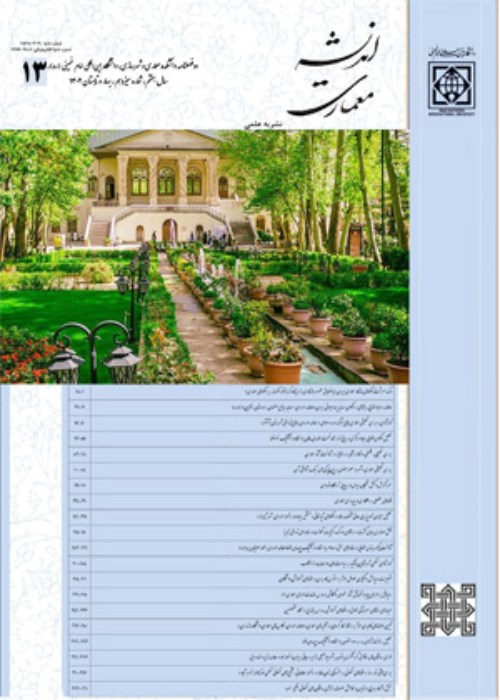The Effect of layout on Educational Spaces Design to Improve academic and cognitive performance
Author(s):
Article Type:
Research/Original Article (دارای رتبه معتبر)
Abstract:
Achieving educational goals requires an appropriate place to create relevant behaviors, so the effective role of the learning environment in Improving students' learning and development, cannot be ignored. One of the environmental capabilities that can be effective in students' education in a class is the layout pattern in the classroom. As previous study stated, the layout pattern is divided into two general categories comprising traditional and participatory pattern. The former shows the pattern where people sit in a row whereas in the latter people work in groups of more than two people. In this regard, the layout can be circular, semi-circular, or optional. In this study in order to clarify the influence of the architectural studios layout on students' cognitive function, two above-mentioned patterns in different type including traditional, participatory (multi-personal groups), participatory (circular class-based) and participatory (table-based) were tested. It is worthy of note that the experimental experiments were carried out to record the student behaviors in the context of different furniture layouts in architectural studios. Therefore, much of this study is qualitative in nature and behavioral observation technique was used. Date analysis was done by using content analysis method. The statistical population of this research included 100 undergraduate and postgraduate students of architecture studying at University of Mazandaran during 2018-2019. In this regard, data achieved from deep observation studios are analyzed qualitatively to achieve the appropriate pattern of furniture layout for architectural studios of University of Mazandaran. The results of deep observation showed that traditional model increased attention to self-employment, individuality, and student-teacher dependency. Moreover, this pattern can reduce the level of enjoyment, which plays an important role in increasing learning capacity. In contrast, participatory (multi-personal groups) layout enhanced the interaction between students. In this regard, the information exchanged results in increasing collaboration in designed activities similar to participatory (table-based) layout. The obtained results from participatory (circular class-based) demonstrated that the mobility, attention and academic performance decreased. In conclusion, it is noted that the use of group layout had a greater impact on improving academic function while the using of a table setting had a greater impact on cognitive function. According to the achieved conclusions and alongside the purpose of the study, the final pattern is expressed as a composition of current patterns. It is suggested that the pattern includes: - personal spaces next to the plural ones with using flexible arrangement so that the confidentiality of the students is covered necessarily and a groups-based space can be shaped to promote interaction between them. _Making semi-open chambers for each group to make personalization for the groups in addition to sitting space with special shelves in the situation, groups can make changes in appearance as well as color of them to promote the belonging sense, pleasure of and cooperation in the classroom. _Increasing in interactive space of students with applying table-based arrangement around teacher's table to increase interaction between students and teacher as well as information exchange. _ Creating shelves for students, a small library for each class, a display space, a semi-open space beside the green space for each class.
Keywords:
Language:
Persian
Published:
Architectural Thought, Volume:3 Issue: 6, 2020
Pages:
96 to 109
magiran.com/p2107747
دانلود و مطالعه متن این مقاله با یکی از روشهای زیر امکان پذیر است:
اشتراک شخصی
با عضویت و پرداخت آنلاین حق اشتراک یکساله به مبلغ 1,390,000ريال میتوانید 70 عنوان مطلب دانلود کنید!
اشتراک سازمانی
به کتابخانه دانشگاه یا محل کار خود پیشنهاد کنید تا اشتراک سازمانی این پایگاه را برای دسترسی نامحدود همه کاربران به متن مطالب تهیه نمایند!
توجه!
- حق عضویت دریافتی صرف حمایت از نشریات عضو و نگهداری، تکمیل و توسعه مگیران میشود.
- پرداخت حق اشتراک و دانلود مقالات اجازه بازنشر آن در سایر رسانههای چاپی و دیجیتال را به کاربر نمیدهد.
دسترسی سراسری کاربران دانشگاه پیام نور!
اعضای هیئت علمی و دانشجویان دانشگاه پیام نور در سراسر کشور، در صورت ثبت نام با ایمیل دانشگاهی، تا پایان فروردین ماه 1403 به مقالات سایت دسترسی خواهند داشت!
In order to view content subscription is required
Personal subscription
Subscribe magiran.com for 70 € euros via PayPal and download 70 articles during a year.
Organization subscription
Please contact us to subscribe your university or library for unlimited access!





